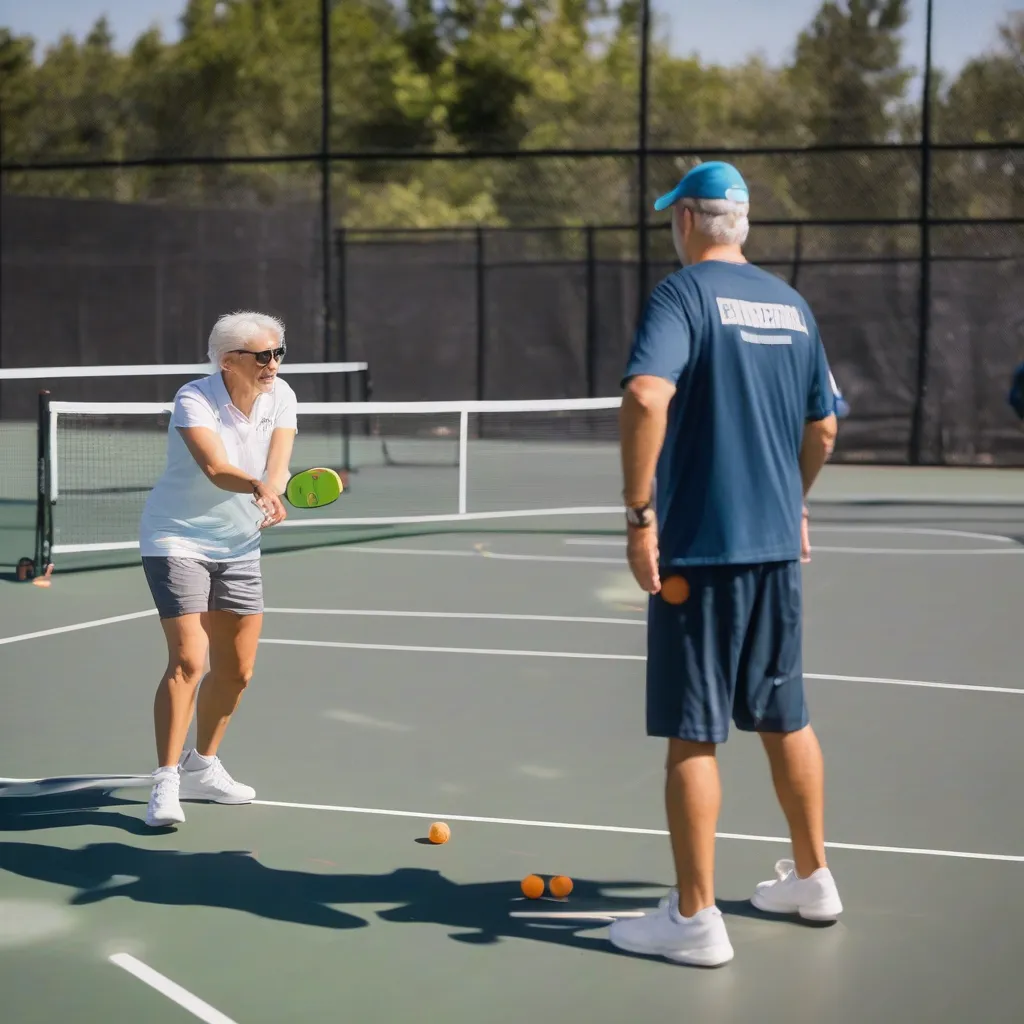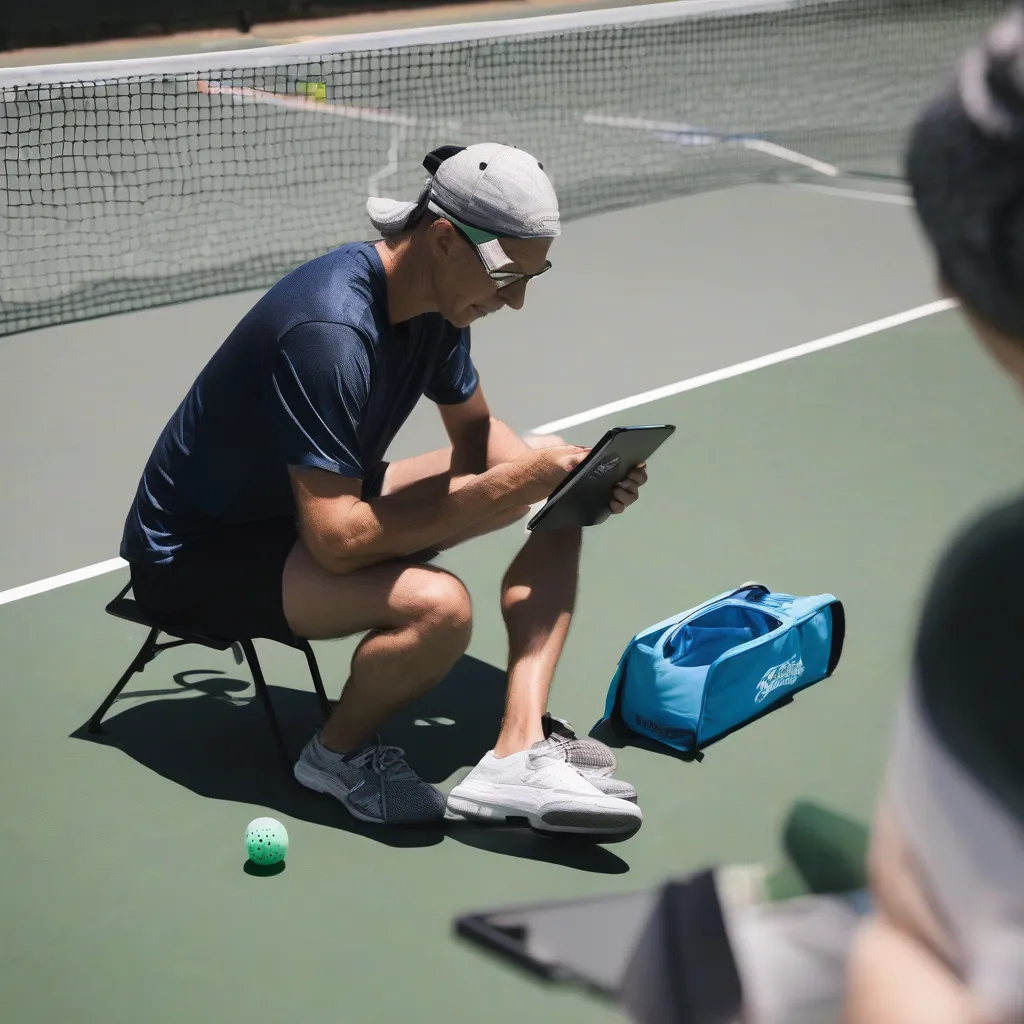Have you ever dreamt of stepping onto the pickleball court, the roar of the crowd in your ears, and confidently smashing that winning dink? Turning that dream into reality requires more than just raw talent; it demands a well-structured training plan. So, how do you train effectively for pickleball tournaments and elevate your game to championship level? Let’s dive in!
Understanding Your Baseline
Before embarking on any training regime, it’s crucial to assess your current fitness level and pickleball skills. Honestly evaluate your strengths and weaknesses. Are you a power player who needs to improve control, or a finesse player lacking in aggressive shots? Knowing where you stand will help you tailor your training for maximum impact.
Assessing Your Fitness
Consider factors like your cardiovascular endurance, strength, agility, and flexibility. A simple way to gauge your cardio is by performing a timed run or walk. For strength, assess how many repetitions you can do of standard exercises like push-ups and squats. Agility can be tested with cone drills or shuttle runs. Don’t forget flexibility; tight muscles can hinder your movement and increase your risk of injury.
Evaluating Your Pickleball Skills
Analyze your gameplay. Are your serves consistent? How’s your dinking game? Are you comfortable volleying at the net? Do you struggle with returning hard serves? Identifying your weaknesses will allow you to focus your training efforts where they are needed most. Consider filming yourself playing to get an objective view.
 Pickleball Tournament Training Drills
Pickleball Tournament Training Drills
Building a Winning Training Plan
An effective training plan incorporates several key components: on-court drills, off-court conditioning, and mental preparation. Think of it as a three-legged stool; each leg is essential for stability and success.
On-Court Drills
Drills are the cornerstone of pickleball improvement. Focus on drills that address your specific weaknesses. For example, if you’re struggling with dinking, dedicate time to dinking drills with a partner. If your serves are inconsistent, practice different serve types and placement strategies. Consider incorporating drills that mimic game situations, like transitioning from the baseline to the net.
Off-Court Conditioning
Pickleball demands a combination of strength, endurance, agility, and flexibility. A well-rounded off-court conditioning program should include:
- Cardiovascular training: Running, swimming, or cycling will improve your stamina and allow you to compete at a high level for longer periods.
- Strength training: Focus on exercises that target the muscles used in pickleball, such as lunges, squats, and core work. Stronger muscles will improve your power and shot control.
- Agility training: Incorporate ladder drills, cone drills, and shuttle runs to improve your footwork and quickness on the court.
- Flexibility training: Stretching and yoga can improve your range of motion, prevent injuries, and enhance your on-court movement.
Mental Preparation
The mental game is just as important as the physical game. Tournament pressure can be intense, so developing mental toughness is crucial. Visualize yourself playing well, practice positive self-talk, and develop strategies for managing stress and anxiety. Consider incorporating mindfulness or meditation practices into your routine.
Nutrition and Recovery
As a certified nutritionist and meal prep coach, I can’t stress enough the importance of proper nutrition and recovery. Your body needs the right fuel to perform at its best and recover efficiently after intense training.
Fueling Your Body
Focus on a balanced diet rich in whole grains, lean protein, fruits, and vegetables. Proper hydration is also essential. Drink plenty of water throughout the day, especially before, during, and after training sessions.
Prioritizing Recovery
Adequate rest and recovery are crucial for preventing overtraining and injuries. Ensure you’re getting enough sleep and incorporate active recovery methods like light walks or stretching into your routine. Consider consulting with a registered dietitian to develop a personalized nutrition plan that meets your specific needs.
Fine-Tuning Your Strategy
As you get closer to the tournament, start fine-tuning your game strategy. Analyze your opponents’ strengths and weaknesses and develop a plan to exploit them. Practice different game scenarios and develop strategies for adapting to different playing styles.
Doubles Strategy
If you’re playing doubles, communication with your partner is paramount. Develop clear signals and strategies for covering the court effectively. Practice different formations and shot combinations to maximize your chances of winning. Check out the official pickleball doubles rules (https://epickleball.org/pickleball-singles-rules/) for a refresher.
Singles Strategy
Singles pickleball requires a different approach. Focus on controlling the center of the court and forcing your opponent to move. Develop a strong serve and return game and practice varying the pace and placement of your shots.
 Pickleball Tournament Strategy Planning
Pickleball Tournament Strategy Planning
- Bond, Payton (Author)
- English (Publication Language)
- Carnot, Prem (Author)
- English (Publication Language)
- Hall, Dennis (Author)
- English (Publication Language)
- Pickleball rules card – Say goodbye to confusion on the court with this easy-to-follow bi-fold rules reference. Side 1 and Side 2 feature official pickleball rules, including serving rules, scoring, the kitchen rule explained, and more. A great pickleball quick guide for players of all levels.
- For everyone who plays pickleball – Whether you're just learning or have played for years, this instructional pickleball training aid makes the rules easy to understand. It folds in the center for quick access and is great for gym class, coaching, or team practices.
- Foster, Blake (Author)
- English (Publication Language)
- Anderson, Brian (Author)
- English (Publication Language)
- Hill, Cade (Author)
- English (Publication Language)
- BUILT TO LAST – 7-ply maple creates durable but light paddle. Includes 2 Rally Meister Paddles, 4 Yellow Outdoor Pickleballs, Drawstring Bag and Pickleball Rules/Strategy Guide.
- DYNAMIC TOUCH – Responsive and generous sweet spot, easier to maneuver than most wood paddles at only 9.5-10.5 oz. Cushioned grip with wrist strap prevents slipping.
- BUILT TO LAST – 7-ply maple creates durable but light paddle. Includes 4 Rally Meister Paddles, 4 Yellow Outdoor Pickleballs, Drawstring Bag and Pickleball Rules/Strategy Guide.
- DYNAMIC TOUCH – Responsive and generous sweet spot, easier to maneuver than most wood paddles at only 9.5-10.5 oz. Cushioned grip with wrist strap prevents slipping.
- The ultimate pickleball gift – A fun, interactive game that adds excitement to every match. Perfect for birthdays, holidays, and tournament prizes. Spice up your matches – Draw challenge cards that add unique twists, obstacles, and high-stakes rallies. Competitive & strategic – Requires skill, adaptability, and quick thinking, making every point unpredictable. Easy to learn, endless fun – Simple rules with exciting two-point challenge rounds.
Conclusion
Preparing for a pickleball tournament requires dedication, discipline, and a well-rounded approach. By incorporating on-court drills, off-court conditioning, mental preparation, and proper nutrition and recovery, you can significantly improve your game and increase your chances of success. Remember, consistency is key. Stick to your training plan, stay focused, and never stop learning. Now, go out there, compete with confidence, and achieve your pickleball dreams! What are your biggest challenges when preparing for a pickleball tournament? Share your thoughts and experiences in the comments below!









